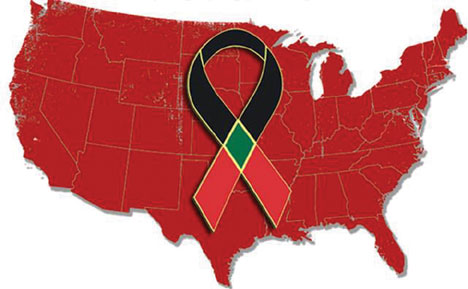

HIV/AIDS in Black America: The Uphill Battle
By Kellee Terrell
TheBody.com
In the fall of 1991, during a game of capture the flag in my eighth grade gym class, the teacher told us to stop playing, get in two lines and be very quiet. She told us that a serious announcement was going to be made. A few minutes later, over the speaker system, the principal played a press conference that was on the news. Earvin “Magic” Johnson, star of the Los Angeles Lakers basketball team, announced to the world that he was HIV positive.
I was completely shocked. Growing up, all I “knew” about HIV was that it was a white disease, and the stigma was it was a gay one — except for Ryan White, who somehow contracted HIV through a blood transfusion. I was under the impression that this was not something that Black people had to worry about.
Almost 20 years have passed since Johnson’s public disclosure, and so much has changed.
The face of this epidemic in the U.S. is now one that resembles mine. AIDS is the number one killer of Black women ages 24-35. Black men who have sex with men have the highest HIV rate among all racial groups of gay men.
Overall, while African Americans make up a mere 12 percent of the overall U.S. population, they account for more than half of all new HIV infections that are diagnosed each year. And to make matters worse, African Americans are more likely to be diagnosed with HIV and AIDS at the same time than any other racial group, meaning they’re less likely to get tested until they’re very ill.
Black AIDS Institute’s Chief Executive and President, Phill Wilson, wasn’t exaggerating when he said that “AIDS is the fire that is ravaging the Black community.”
So what exactly is fueling the flames?
There is no one answer. It’s a combination of many factors: Poverty and economic instability. Institutionalized racism.
Lack of quality health care, poor access to health care in general and mistrust in the medical system. Gender inequality and domestic violence. Homophobia. Intravenous drug use and the lack of needle-exchange programs. Poor health literacy. High rates of incarceration. Untreated sexually trans-mitted diseases, such as herpes and gonorrhea, which make people more vulnerable to contracting HIV.
And people having unprotected sex while unaware that they are positive and who thus go untreated while they’re highly infectious.
The slow response by the federal government has played a role as well, as has a lack of funding. Thirty years into the epidemic and it was only just in the last two year that the U.S. government finally released a national HIV/AIDS strategy.
But most importantly, the Black community’s own slow response to the epidemic has had a profound impact. Minus a few exceptions, most Black media publications, churches and community leaders set the tone early by turning a blind eye to HIV, believing that this epidemic was not their problem and that HIV was a moral issue as opposed to a public health crisis. In the end, we have all paid a price for their unwillingness to address the disease early on.
Don’t get me wrong: Over the years, we have seen some progress in having public conversations about HIV, and the importance of getting tested and practicing safer sex. But we still have a long way to go. Unfortunately, too many current conversations about HIV — especially in the Black media — are either met with resistance, treaded lightly or saturated with inaccuracies (think: everything about the down low).
Even within the past year, I have heard stories from people living with HIV who have recently been forced to eat off paper plates because those around them are still unaware of how HIV is contracted. Or how they are turned away from their church or rejected by loved ones and friends. I still come across people who don’t really know what HIV is, who believe whole-heartedly that AIDS is a government conspiracy to kill Black folks, or who believe that they are not at risk for HIV because their sexual partner is not a gay man. The culture of ignorance, stigma, silence and fear is very real, and it is killing us.
Now is the time for change — and that change begins with you. This is why our African-American HIV/AIDS Resource Center at TheBody.com exists.
By providing a diverse range of articles, first-person interviews and resources about HIV in Black America, our goal is to give you hope and help bridge the knowledge gap between what you don’t know and what you need to know. Most importantly, this resource center is for everyone, not just those who are living with HIV. So, if you are a loved one or a care-taker of someone living with HIV, or you’re simply interested in learning more about HIV, AIDS and safer sex, this is a place for you too.
We hope that our African-American HIV/AIDS Resource Center inspires you to join the fight and keep the faith. Because even though it is a steep, uphill battle, remember that it is winnable. It won’t be easy, but if everyone in our community can step up, get educated about the disease, get tested and take control and responsibility for our health, anything is possible.


Be the first to comment